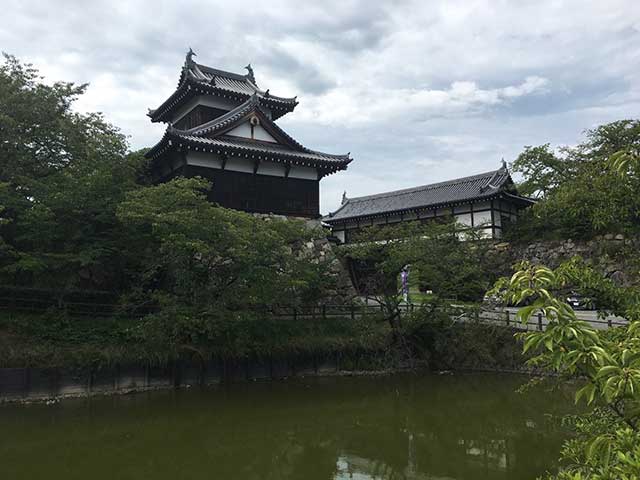
The impressive ruins of Koriyama Castle sit atop a small hill, surrounded by two rivers. The strategic positioning and strong layout of the castle served it well through the final years of the Sengoku period and the peaceful days of the Edo period.
Tsutsui Junkei (1549-1584), after defeating Matsunaga Hisahide with the assistance of Oda Nobunaga, relocated from Tsutsui Castle to Koriyama and built the magnificent castle as a symbol of his mastery over the Yamato region. Two years after its completion in 1580, Akechi Mitsuhide attacked Oda Nobunaga in the Honno-ji Incident and sought Tsutsui’s military assistance at Horagatoge Pass. Tsutsui, who had served under Akechi since allying with the Oda, hesitated and observed the unfolding events before deciding his course of action. This delayed response led to the Japanese saying “Horagatoge wo kimekomu,” meaning “to wait and see what happens at Horagatoge,” used sarcastically to describe someone who waits to join the winning side.
In 1595, Mashita Nagamori ruled the area from the fine castle but was forced out following the Battle of Sekigahara in 1600. For the next 15 years, Koriyama remained vacant until the Tokugawa installed Mizuno Katsushige in Yamato, tasking him with reconstructing the now-dilapidated structures. The Honda clan also served as lords of Koriyama.
In 1724, the Yanagisawa clan of Kofu (Yamanashi Prefecture) became masters of Koriyama. Upon hearing of Lord Yanagisawa Yoshisato’s transfer, the peasants of Kofu promptly paid their annual rice tax and saw their lord off with respect. He brought with him 5,286 retainers and their families to Koriyama, along with his prized pet goldfish. This led to a prosperous side business for many lower-ranked samurai, sustaining them long after the Meiji Restoration in 1868, when the samurai were disbanded. The Yanagisawa clan also introduced silkworm farming, improving the local economy. They remained in control of Koriyama until the Meiji Restoration. Koriyama Castle was destroyed in 1873. The surrounding deep moats, impressive stonework, and the castle’s Rinkakushiki layout, with the Honmaru protected on all four sides by surrounding baileys and precincts, offer much for castle enthusiasts to enjoy. Having been built in 1580, the stone walls exhibit a mixture of stoneworking methods.
The Otemon gate, Ote Mukai Yagura, Tamon Yagura, and Ote East Yagura have been well reconstructed and are open at certain times during the year. Plans are underway to reconstruct the Gokuraku Bridge and Hakutaku gate. Koriyama Castle was designated one of the Alternative Top 100 Castles in early 2017.
See also
-
Okayama Castle
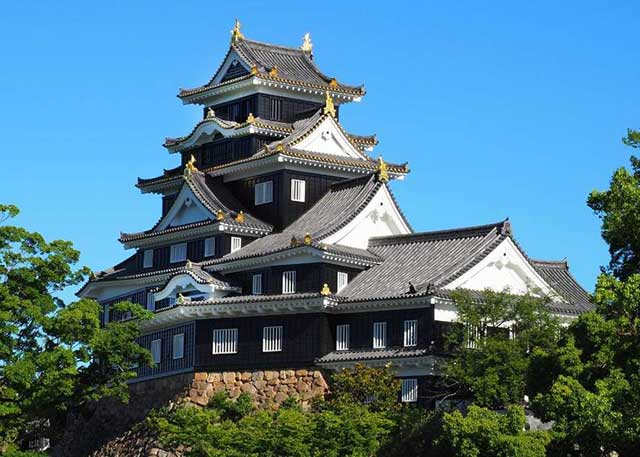
According to a number of accounts, the earliest fortifications on the site of present-day Okayama Castle appeared as early as the 14th century and were built by the Nawa clan. The Asahigawa River was used as a natural defensive barrier, protecting one side of the fortifications.
In the early 16th century, the Kanamitsu clan constructed a new castle here, which at the time was known as Ishiyama. In 1573, it came under the control of the Ukita clan, after which Ukita Naoie (1529–1582) launched large-scale reconstruction efforts. He did not live to see the work completed, and construction was continued by his son Hideie. -
Nagahama Castle
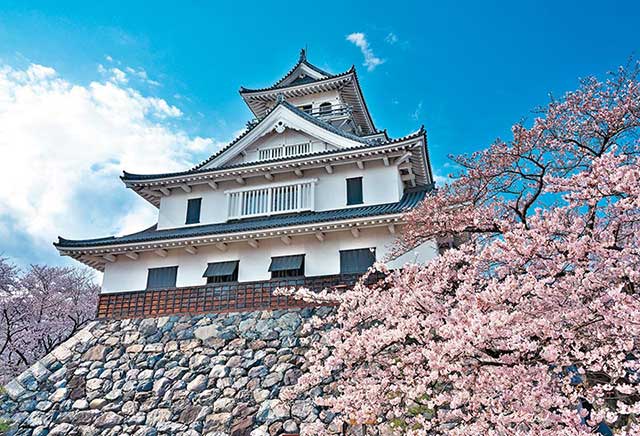
Hashiba, later known as Toyotomi Hideyoshi, received Odani Castle and the surrounding lands from Oda Nobunaga after the defeat of the Azai clan. However, Odani Castle was located high in the mountains, which made it poorly suited for the effective administration of the territory. For this reason, in 1575 Hideyoshi began constructing a new castle in the village of Imahama on the shore of Lake Biwa. Taking the character naga from Nobunaga’s name, he renamed both the village and the new castle Nagahama.
-
Kokura Castle
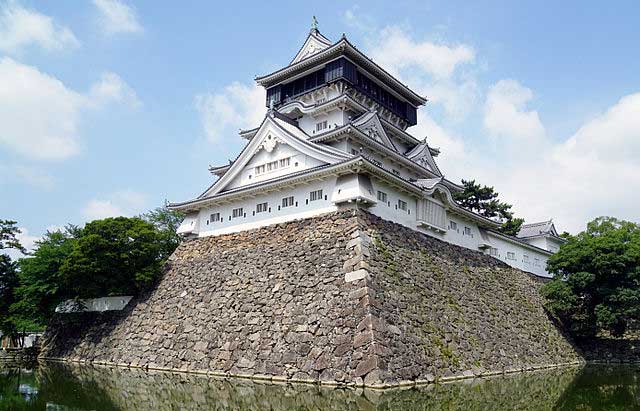
Kokura Castle is traditionally considered to have been founded by Hosokawa Tadaoki (1563–1645), although by the time the Hosokawa clan came to control these lands, the fortification had already existed since at least 1569 and was most likely built by members of the Mori clan.
-
Ikeda Castle
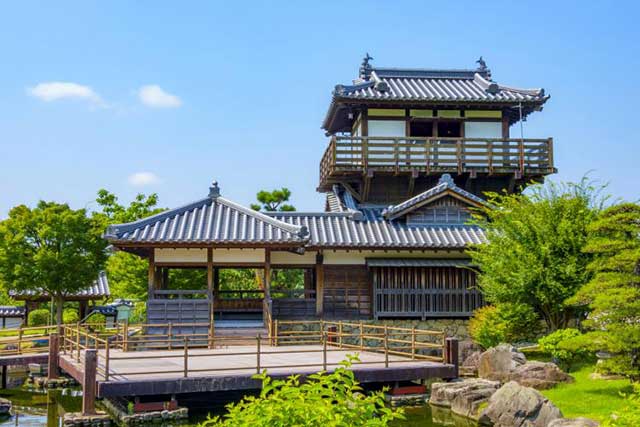
In 1334, Ikeda Noriyoshi built a small fort on this site, which over time was repeatedly expanded and rebuilt. During the Ōnin War of 1467–1477, the Ikeda clan supported the Western Coalition. As a result, Ikeda Castle was attacked and captured by the forces of the Eastern Coalition, but it was soon recaptured, allowing it to avoid serious destruction.
-
Aizu-Wakamatsu Castle
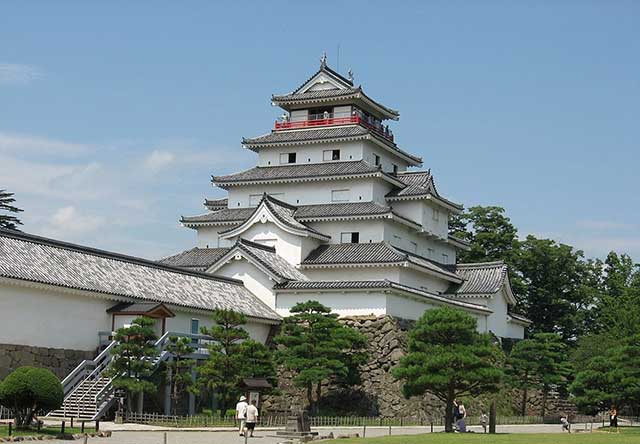
Aizu-Wakamatsu is the most powerful and at the same time the oldest castle in the Tōhoku region in the north of Honshu Island. Its history begins in the 14th century and is closely connected with the Ashina clan, whose members claimed descent from the legendary Taira family.
-
Maruoka Castle
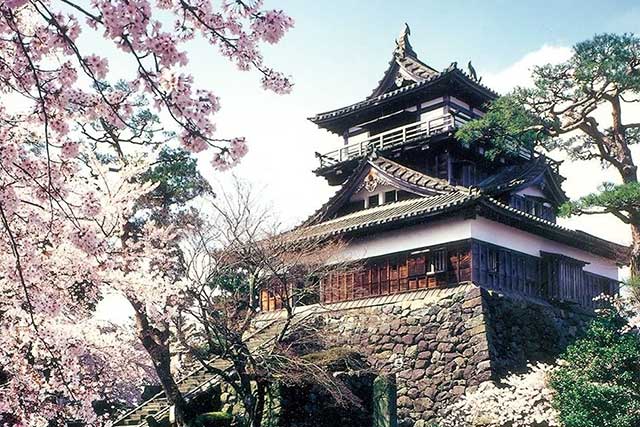
Maruoka Castle is located in the central part of the former city of Maruoka, which is now part of the city of Sakai. This area lies in the northeastern part of Fukui Prefecture. The castle was built on the bank of the Kuzuryu River, on the side opposite Fukui City, which once served as the administrative center of the former Echizen Province. Thanks to its location, Maruoka held significant strategic importance, as it controlled two major routes at once: the Hokurikudo highway leading from Kaga Province and the Mino Kaido road connecting these lands with Mino Province.
-
Marugame Castle
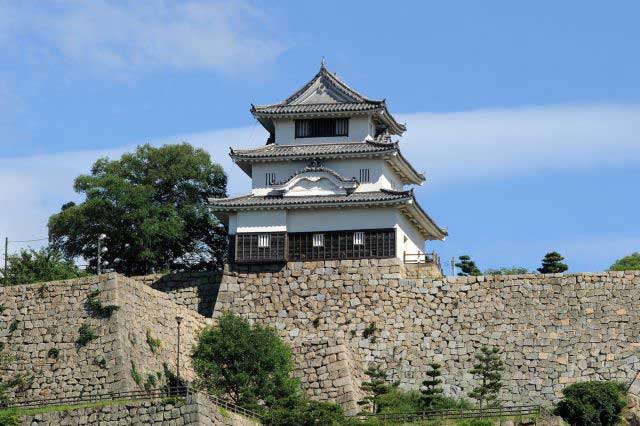
Marugame is part of the so-called “Authentic Dozen,” a group of twelve castles whose donjons have survived to the present day without major reconstructions since the Edo period.
-
Iyo Matsuyama Castle
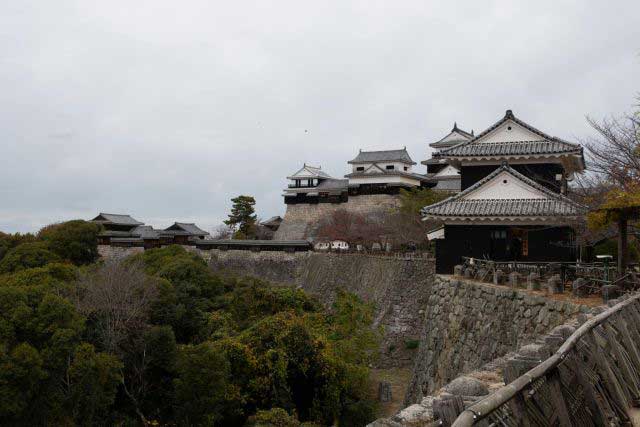
Historically, the center of Iyo Province—corresponding to today’s Ehime Prefecture on the island of Shikoku—was the city of Imabari, while the Matsuyama area was regarded as an agricultural hinterland with broad plains and low hills. During the Muromachi period, the central part of the province was governed by the Kano clan from Yuzuki Castle. With the onset of the Sengoku period, however, this clan lost its former influence and was forced to survive in the shadow of the more powerful Mori and Chōsokabe clans. After Toyotomi Hideyoshi’s forces conquered Shikoku in 1587, the northern part of Iyo Province was granted to Fukushima Masanori, one of the so-called “Seven Spears of Shizugatake.” In 1595, Masanori was transferred to Kiyosu Castle, and the lands around Matsuyama were given to another of the Seven Spears, Katō Yoshiaki, who received Masaki Castle and an income of 60,000 koku of rice.

